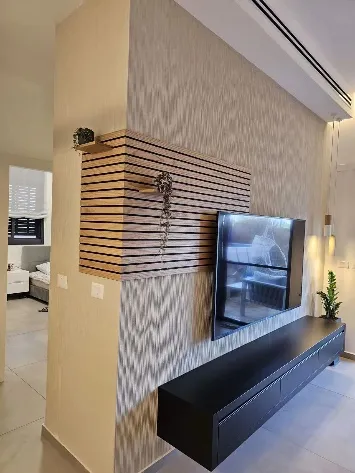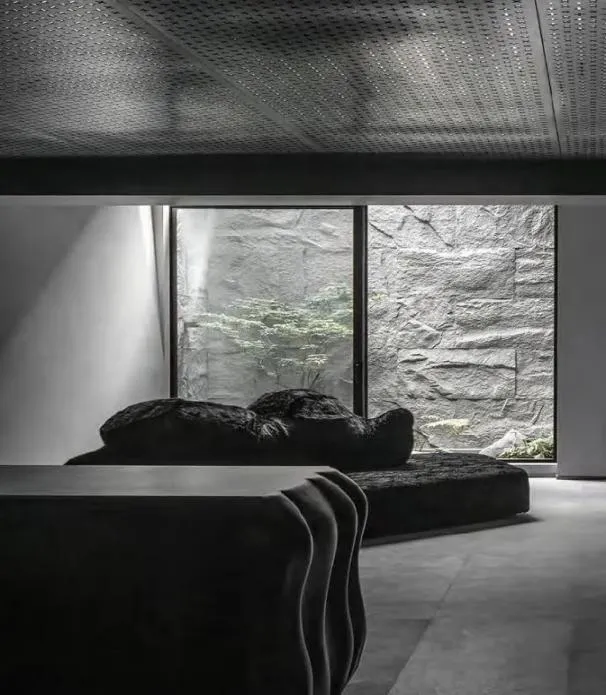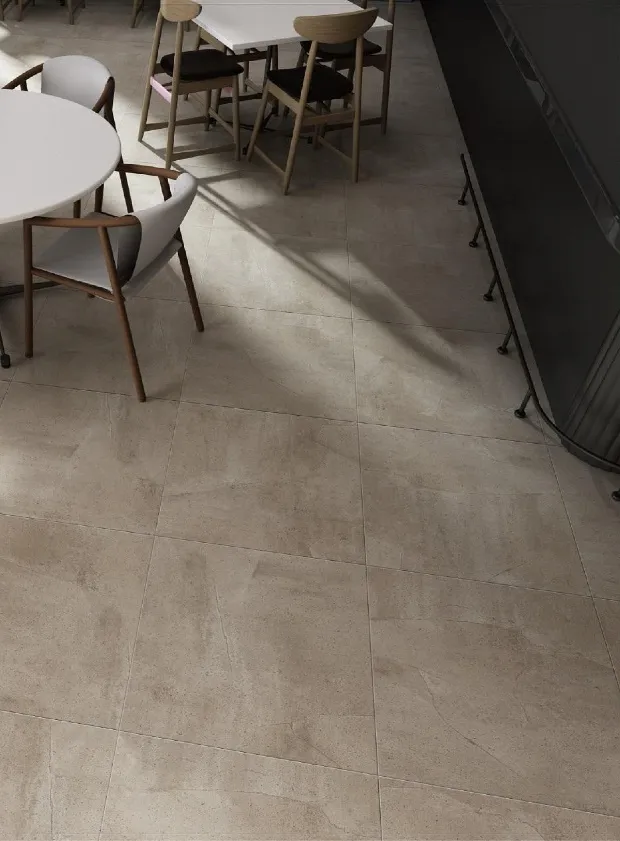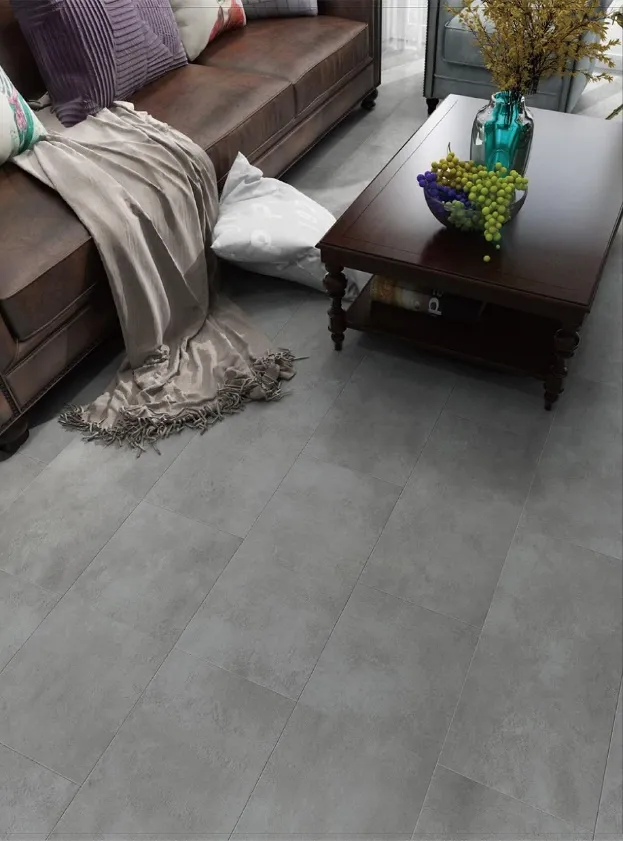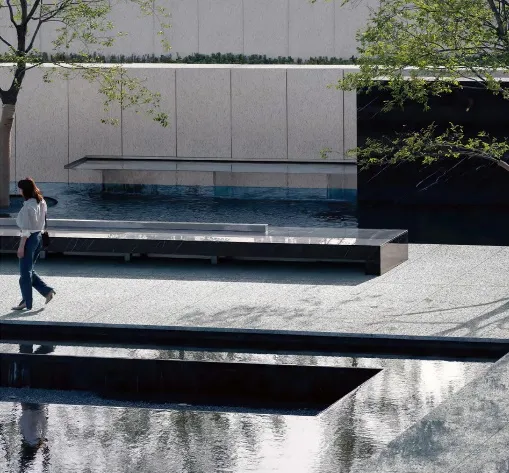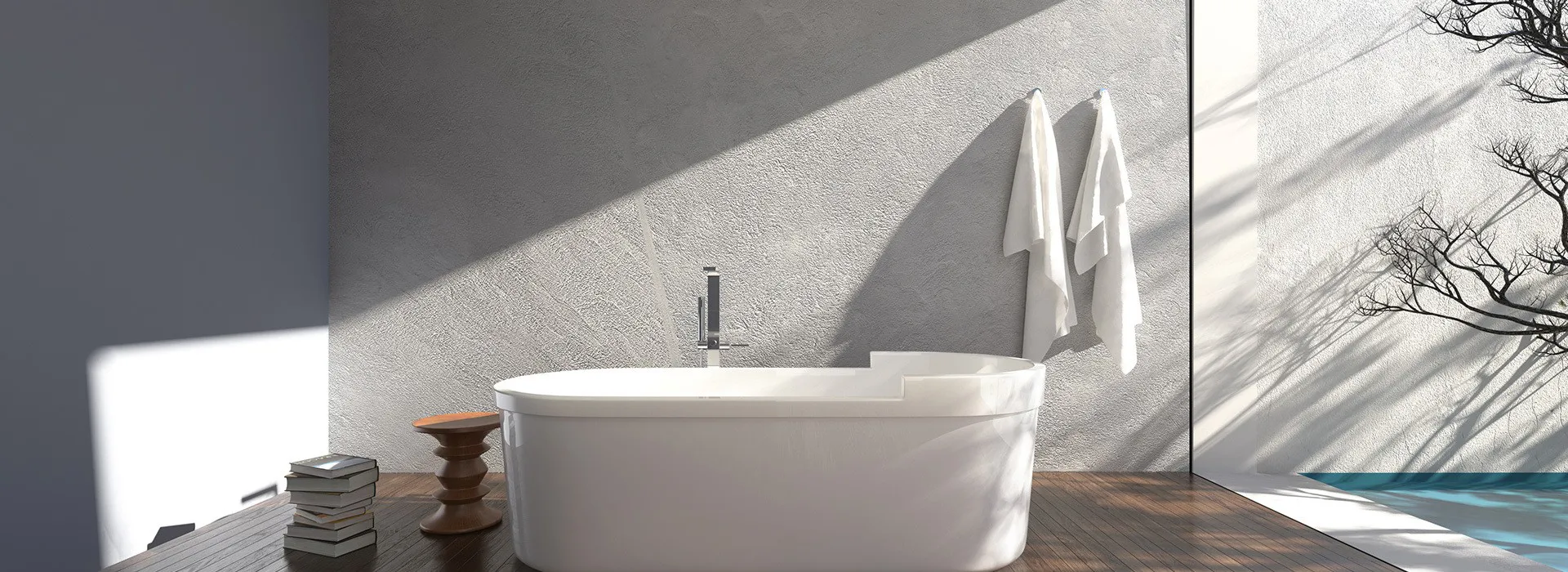
Office Flooring Solutions: Ideal Materials for Productivity & Acoustic Control
Let's start with a scenario we've all experienced: You're in the middle of a crucial deadline, headphones on, trying to focus, when suddenly—*screech*—someone drags their chair across the floor. Or maybe it's the constant echo of footsteps in the hallway, or the murmur of conversations bouncing off hard surfaces, making it impossible to concentrate. Sound familiar? Here's the thing: We often blame distractions on noisy colleagues or clunky equipment, but what if the real culprit is right under our feet? That's right—office flooring. It's one of the most overlooked elements of workplace design, yet it plays a massive role in how we work, how we feel, and how productive we are.
In this article, we're diving deep into office flooring solutions—not just as a design choice, but as a tool to boost productivity, reduce noise, and create a space where employees actually *want* to spend their days. We'll break down why flooring matters, what to look for when choosing materials, and explore some of the best options on the market, including tried-and-true classics and innovative new solutions. Plus, we'll talk about how partnering with the right flooring supplier can make all the difference in turning your office into a quiet, efficient, and inspiring hub.
Why Office Flooring Isn't Just About Looks
Before we get into specific materials, let's talk about why flooring deserves more attention than just "picking something that matches the walls." Think about a typical office: employees spend 8+ hours a day here, walking, standing, sitting, and moving. Clients visit, meetings happen, coffee spills (let's be real), and chairs are rolled back and forth hundreds of times. Your flooring has to handle all of that—and more. But beyond durability, there are two big reasons flooring impacts your workplace: acoustic control and employee well-being .
Acoustic control is all about noise. Open offices are popular for collaboration, but they're also echo chambers. Hard floors can amplify every sound: a dropped pen, a slammed drawer, even the rustle of papers. Studies show that excessive noise reduces productivity by up to 30% and increases stress levels—hardly the recipe for a thriving team. On the flip side, the right flooring can absorb or dampen sound, turning a chaotic space into one where focus comes naturally.
Then there's well-being. Comfort underfoot matters when you're standing at a desk for hours or walking between meetings. Cold, hard floors can make legs ache; slippery surfaces pose safety risks; and outdated, stained flooring? It sends a message that the company doesn't care about. When employees feel their workspace is designed with their comfort in mind, morale goes up—and so does retention. So, flooring isn't just a practical choice; it's an investment in your team.
Key Considerations: What to Look for in Office Flooring
Choosing the right flooring isn't a one-size-fits-all process. Every office has unique needs: a busy call center with constant foot traffic has different priorities than a creative studio that values aesthetics, or a hospital-adjacent office that needs strict hygiene standards. But there are a few universal factors to keep in mind. Let's break them down:
- Acoustic Performance: How well does the material absorb or block sound? Look for products with high NRC (Noise Reduction Coefficient) ratings for absorption and STC (Sound Transmission Class) ratings for blocking noise between floors.
- Durability: Can it handle heavy traffic, chair casters, and the occasional coffee spill without scratching, staining, or warping? High-traffic areas like lobbies and hallways need tougher materials than private offices.
- Maintenance: How easy is it to clean? Does it require regular sealing, polishing, or professional upkeep? Time is money, and nobody wants to spend hours maintaining floors.
- Aesthetics: Does it match your brand's vibe? Modern, traditional, minimalist? Flooring sets the tone for the entire office, so it should align with your company culture.
- Safety: Is it slip-resistant? Does it meet fire safety codes? In spaces with liquids (like break rooms) or elderly visitors, this is non-negotiable.
- Sustainability: Is it made from eco-friendly materials? Does it have low VOC emissions? More and more companies are prioritizing green choices, and employees notice.
Keep these in mind as we explore the top flooring solutions next. The goal? To find a material that checks most of these boxes while staying within budget. And remember: sometimes, combining materials (e.g., carpet tiles in workstations, hard floors in hallways) is the smartest approach.
Top Office Flooring Solutions: Balancing Productivity & Acoustics
Now, let's get to the good stuff: the materials themselves. We'll focus on options that excel in acoustic control, durability, and practicality—with a few that add a touch of style, too. And yes, we'll be highlighting some of the most trusted solutions in the industry, including granite stone solutions, terrazzo tile solutions, and versatile flooring solutions that adapt to any space.
1. Granite Stone Solutions: Timeless Durability with a Professional Edge
When you think of granite, you probably picture luxury kitchens or high-end hotel lobbies—and for good reason. This natural stone is tough, beautiful, and built to last. But did you know it's also a solid choice for offices? Granite stone solutions offer a unique blend of durability and sophistication that works in everything from corporate headquarters to boutique agencies.
First, let's talk durability. Granite is one of the hardest natural stones, scoring a 6-7 on the Mohs hardness scale (diamonds are a 10, for reference). That means it can handle heavy foot traffic, rolling chairs, and even the occasional dropped laptop without scratching. It's also resistant to stains, heat, and moisture—perfect for busy areas like reception desks or break rooms where spills happen. And unlike synthetic materials, granite ages gracefully; over time, it develops a subtle patina that adds character, rather than looking worn out.
Aesthetically, granite brings a level of professionalism that's hard to match. With its unique veining and color variations (think deep blacks, warm beiges, and speckled grays), it instantly elevates a space, making clients and employees alike feel like they're in a premium environment. It's also surprisingly versatile: pair it with sleek glass partitions for a modern look, or with wood accents for a more traditional vibe.
But what about acoustics? Here's the catch: natural stone is hard, so it can reflect sound if not installed properly. That's where granite stone solutions shine—reputable suppliers don't just sell the stone; they provide full installation support, including underlayment options. Adding a sound-absorbing underlayment (like cork or rubber) beneath the granite can drastically improve its acoustic performance, turning it from a potential echo-maker into a noise-dampening surface. It's a small extra step that makes a big difference in open offices.
Maintenance-wise, granite is low-effort. Daily sweeping or vacuuming to remove dust, and mopping with a mild detergent when needed, is usually enough. It does need periodic sealing (every 1-3 years, depending on traffic) to prevent stains, but that's a small price to pay for a floor that looks brand-new for decades. For offices that want a "set it and forget it" option with long-term value, granite stone solutions are hard to beat.
2. Terrazzo Tile Solutions: Customizable, Seamless, and Stunning
If granite is the classic choice, terrazzo is the modern trendsetter. You've probably seen it in trendy cafes, museums, or tech offices—it's that sleek, colorful surface with tiny chips of stone, glass, or metal embedded in a smooth matrix. Terrazzo tile solutions have exploded in popularity lately, and it's not hard to see why: they're customizable, durable, and perfect for offices that want to make a design statement.
Let's start with customization. Terrazzo is like a blank canvas: you can choose the base color (cement, epoxy, or resin), the type of chips (marble, granite, glass, even recycled materials), and the pattern (seamless, geometric, or even company logos). Want your brand's Pantone color woven into the floor? Done. Prefer a minimalist all-white look with subtle gold flecks? No problem. This level of personalization makes terrazzo ideal for offices that want to stand out and reinforce their brand identity.
Durability is another win. Epoxy terrazzo, in particular, is incredibly tough—it's resistant to scratches, stains, and chemicals, making it great for high-traffic areas. Unlike tile, which has grout lines that trap dirt and wear down over time, terrazzo can be poured seamless, eliminating those hard-to-clean crevices. That seamless surface also means fewer tripping hazards and a more polished look. In fact, terrazzo floors installed decades ago in historic buildings are still going strong today—proof of their longevity.
Acoustically, terrazzo performs better than you might expect. The epoxy resin matrix is slightly more flexible than solid stone, which helps absorb some impact noise (like footsteps). Plus, since it's seamless, there are no gaps for sound to bounce through. For even better results, pair it with a sound-dampening underlayment or use it in combination with carpet tiles in work areas—you get the best of both worlds: a stunning terrazzo lobby and quiet workstations.
Maintenance is a breeze, too. Sweep or vacuum regularly, and damp-mop with a neutral cleaner. Unlike natural stone, epoxy terrazzo doesn't need sealing—its non-porous surface resists stains on its own. That makes it a great choice for offices that want high style without the high upkeep. Terrazzo tile solutions also align with sustainability goals: many suppliers use recycled chips, and the long lifespan means less frequent replacement (and less waste).
The only downside? Terrazzo can be more expensive upfront than synthetic options like vinyl. But when you factor in its durability, low maintenance, and timeless appeal, it's an investment that pays off. For offices that want to combine aesthetics, functionality, and sustainability, terrazzo tile solutions are a top contender.
3. Vinyl Composite Tile (VCT): Budget-Friendly and Versatile
Not every office has the budget for granite or terrazzo—and that's okay. Vinyl Composite Tile (VCT) has been a staple in commercial spaces for decades, and for good reason: it's affordable, durable, and comes in a wide range of styles. While it might not have the "wow" factor of natural stone, VCT flooring solutions are a practical choice for offices that need to balance cost and performance.
VCT is made from vinyl chips bonded with a limestone filler and PVC resin, then coated with a protective layer. It's available in sheets or tiles (usually 12x12 inches), making installation quick and easy. One of its biggest advantages is cost: it's significantly cheaper than natural stone or hardwood, making it ideal for large offices or startups on a tight budget. It's also highly customizable—you can mix and match colors to create patterns, logos, or zones (e.g., different colors for walkways vs. work areas).
Durability-wise, VCT holds up well in medium-traffic areas. It's resistant to scratches and dents, and if a tile gets damaged, you can replace just that tile instead of the whole floor—a huge cost-saver. However, it does require regular maintenance: stripping and waxing every 3-6 months to keep the protective layer intact. Skip this, and the tiles will start to look dull and wear down faster. For offices with in-house janitorial staff, this is manageable; for smaller teams, it might be an extra hassle.
Acoustically, VCT is a mixed bag. On its own, it's a hard surface that can reflect sound, but there are ways to improve it. Many VCT flooring solutions now include options with attached cushioning or sound-absorbing backing, which helps dampen impact noise. Pair it with area rugs in breakout spaces or carpet tiles in workstations, and you can create a balanced acoustic environment without breaking the bank.
So, who is VCT best for? Schools, government offices, and call centers—spaces where cost and durability are top priorities, and there's staff to handle regular maintenance. It's also a good temporary solution for offices planning a renovation in 5-10 years, as it's easy to remove and replace.
4. Carpet Tiles: The Acoustic Champion
If acoustic control is your top priority, carpet tiles might be the answer. Unlike wall-to-wall carpet, which can be expensive to replace if stained, carpet tiles are modular—you can swap out a single tile if something spills. They're soft, comfortable, and excellent at absorbing sound, making them a favorite in open offices and collaborative spaces.
Acoustically, carpet tiles are hard to beat. They have high NRC ratings (often 0.6 or higher), meaning they absorb most of the sound that hits them—no more echoing footsteps or chair scrapes. They also reduce impact noise (like someone dropping a book) and airborne noise (like conversations), creating a quieter environment where focus is easier. For teams that need to concentrate (think writers, designers, or analysts), this is a game-changer.
Comfort is another plus. Carpet tiles provide cushioning underfoot, reducing fatigue during long workdays. They're also warm, which is nice in colder climates or offices with poor heating. And with endless styles, colors, and textures available, you can create a cozy, inviting space that feels less "corporate" and more "homey"—great for boosting morale.
But there are downsides. Carpet tiles can stain if not treated, and they're not the best choice for areas with heavy moisture (like break rooms or entryways where rain/snow is tracked in). They also trap dust and allergens, which can be a problem for employees with allergies. That said, modern carpet tiles come with stain-resistant treatments and low-VOC options, making them more office-friendly than ever.
Maintenance involves regular vacuuming and spot cleaning. Deep cleaning (steam cleaning) every 6-12 months helps keep them looking fresh. And since they're modular, replacing a stained or worn tile is quick and affordable—no need to redo the entire floor. For offices where noise reduction and comfort are non-negotiable, carpet tiles are a strong choice.
5. Engineered Hardwood: Warmth and Style with Added Durability
For offices that want the warmth of wood without the high maintenance, engineered hardwood is a solid middle ground. Made from a thin layer of real hardwood bonded to a plywood core, it's more stable than solid hardwood (less likely to warp with humidity) and often more affordable. Engineered hardwood flooring solutions bring a natural, inviting feel to offices, making them great for client meeting rooms or executive suites.
Aesthetically, engineered hardwood can mimic the look of oak, maple, cherry, or even exotic woods, giving you the high-end vibe of real wood at a fraction of the cost. It adds warmth to a space, making it feel less sterile and more welcoming—important for building relationships with clients or creating a relaxed team environment.
Durability-wise, the plywood core makes it more resistant to moisture and temperature changes than solid hardwood, so it works in most office settings (just avoid areas with standing water). The top hardwood layer can be sanded and refinished a few times, extending its lifespan to 20+ years with proper care.
Acoustically, engineered hardwood is better than solid hardwood but not as good as carpet tiles. It can still reflect sound, but adding a cork underlayment helps absorb impact noise. Some engineered hardwood options even come with attached padding for extra acoustic support. For offices that want a balance of style and sound control, this is a great compromise.
Maintenance involves regular sweeping or vacuuming and occasional mopping with a wood-specific cleaner. Avoid harsh chemicals or excessive water, as these can damage the finish. With proper care, engineered hardwood stays looking beautiful for years, making it a timeless choice for offices that value both aesthetics and practicality.
Comparing the Options: A Quick Guide
With so many choices, it can be hard to keep track of which material is best for what. To simplify, here's a comparison table breaking down the key features of our top picks:
| Material | Acoustic Performance | Durability | Maintenance | Best For |
|---|---|---|---|---|
| Granite (with underlayment) | Good (with underlayment: NRC 0.3-0.5) | Excellent (50+ years) | Low (sweep, mop, seal every 1-3 years) | High-traffic lobbies, reception areas, corporate offices |
| Terrazzo Tile | Very Good (NRC 0.4-0.6 with seamless installation) | Excellent (50+ years) | Low (sweep, mop, no sealing needed for epoxy) | Modern offices, creative spaces, high-end retail offices |
| Vinyl Composite Tile (VCT) | Fair (NRC 0.2-0.3; better with cushioning) | Good (10-20 years) | Moderate (sweep, mop, strip/wax every 3-6 months) | Budget-conscious offices, schools, call centers |
| Carpet Tiles | Excellent (NRC 0.6-0.8) | Good (10-15 years) | Moderate (vacuum, spot clean, steam clean annually) | Open offices, workstations, collaborative areas |
| Engineered Hardwood | Fair to Good (NRC 0.2-0.4 with underlayment) | Very Good (20-30 years) | Moderate (sweep, mop with wood cleaner, avoid water) | Meeting rooms, executive suites, client areas |
Beyond the Material: Acoustic Control Technologies
Even the best flooring can't solve all acoustic issues on its own. That's where acoustic control technologies come in. These add-ons work with your flooring to create a quieter, more productive space. Let's explore a few key ones:
Underlayments
Underlayments are thin layers of material installed between the subfloor and your flooring. They're like a buffer that absorbs impact noise (e.g., footsteps, dropped objects) and reduces sound transmission between floors. Common materials include cork (natural, eco-friendly, good for moisture control), rubber (excellent for heavy impact, like in gyms or busy lobbies), and foam (affordable, lightweight). Most flooring suppliers offer underlayment options tailored to their products—for example, granite stone solutions might recommend a rubber underlayment for maximum acoustic benefit, while carpet tiles might pair with a foam underlayment for extra cushioning.
Floating Floors
Floating floors aren't attached to the subfloor—instead, they "float" on top, held together by interlocking edges. This design breaks the sound transmission path, reducing noise between floors. Vinyl and engineered hardwood are often installed as floating floors, and they work especially well with underlayments for double the acoustic benefit. If you're in a multi-story office building, floating floors can be a lifesaver for reducing noise complaints from tenants below.
Sound-Absorbing Ceilings and Walls
Okay, this isn't flooring, but it's worth mentioning: acoustic control is a team effort. Pairing your flooring with sound-absorbing ceiling tiles (like those made from mineral fiber) and wall panels (think fabric-wrapped or acoustic foam) creates a "sound blanket" effect, absorbing noise from all directions. For example, a terrazzo floor with a cork underlayment, plus acoustic ceiling tiles and fabric partitions, can turn an echoey open office into a calm, focused space.
Maintenance Tips: Keeping Your Floors Looking (and Performing) Like New
Even the most durable flooring will wear down faster without proper care. Here are some simple maintenance tips to extend the life of your floors and keep them performing at their best:
- Sweep/vacuum regularly: Dirt and grit act like sandpaper, scratching floors over time. A quick daily sweep or vacuum removes these particles before they cause damage.
- Wipe spills immediately: Even stain-resistant floors can be damaged by acidic liquids (like coffee or juice) if left too long. Keep a spill kit handy in high-risk areas.
- Use furniture pads: Attach felt or rubber pads to chair and table legs to prevent scratches from dragging. This is especially important for hardwood, granite, and terrazzo.
- Follow manufacturer guidelines: Flooring suppliers provide specific cleaning instructions—e.g., granite might need a pH-neutral cleaner, while VCT requires waxing. Ignoring these can void warranties or damage the floor.
- Deep clean periodically: Depending on the material, this might mean steam cleaning carpet tiles, polishing terrazzo, or refinishing hardwood. Set a schedule and stick to it—prevention is cheaper than replacement.
Choosing the Right Flooring Supplier: Why Partnership Matters
You've narrowed down your material choices, considered acoustic needs, and planned for maintenance. Now, it's time to pick a supplier. This might seem like a simple step—just find the cheapest option, right? Wrong. The right flooring supplier can make or break your project. Here's what to look for:
Product Expertise
A good supplier doesn't just sell products—they guide you. They should ask questions about your office's traffic, layout, and priorities, then recommend the best materials and acoustic solutions for your needs. For example, a supplier specializing in flooring solutions should be able to explain why granite stone solutions might work better in your lobby than terrazzo, or how to pair carpet tiles with underlayment for maximum noise reduction. Avoid suppliers who push a one-size-fits-all product without listening to your needs.
Installation Support
Flooring is only as good as its installation. Even the best granite or terrazzo will fail if installed incorrectly (e.g., uneven subfloor, poor underlayment, or shoddy grouting). Look for suppliers who offer in-house installation teams or partner with certified installers. They should also provide warranties on both products and labor—this gives you peace of mind that if something goes wrong, they'll fix it.
Customization Options
Every office is unique, and your flooring should reflect that. Suppliers who offer customization—like terrazzo tile solutions with custom colors or granite stone solutions with unique edge finishes—can help you create a space that stands out. This is especially important for branding: imagine walking into a tech startup with a terrazzo floor featuring their logo, or a law firm with granite floors in their signature color. It's a small detail that makes a big impression.
After-Sales Service
The relationship shouldn't end after installation. A reputable supplier will check in to ensure you're happy with the floors, provide maintenance tips, and offer support if issues arise (e.g., a cracked tile, a stain that won't come out). They should also have replacement parts or tiles on hand, so you're not waiting weeks if something needs fixing.
Conclusion: Invest in Flooring, Invest in Your Team
At the end of the day, office flooring is more than just a surface to walk on. It's a foundation for productivity, a tool for acoustic control, and a reflection of your company's values. Whether you choose granite stone solutions for timeless durability, terrazzo tile solutions for modern style, or carpet tiles for maximum noise absorption, the key is to prioritize materials that align with your team's needs and your long-term goals.
Remember: the right flooring reduces distractions, boosts morale, and creates a space where employees can do their best work. And when your team thrives, your business thrives. So, don't overlook this crucial element of office design. Partner with a trusted flooring supplier, ask questions, and invest in solutions that will grow with your company for years to come. Your team—and your bottom line—will thank you.
Tags:
Recommend Products


